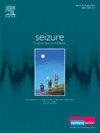血管紧张素受体阻滞剂(ARBs)可降低缺血性卒中和高血压患者发生癫痫的风险
IF 2.8
3区 医学
Q2 CLINICAL NEUROLOGY
引用次数: 0
摘要
目的中风是60岁以上患者癫痫发作的最常见原因。大约10 - 30%的老年癫痫新诊断与脑缺血事件有关。高血压是癫痫和中风的主要危险因素,2%的癫痫患者患有高血压。根据欧洲心脏病学会指南,血管紧张素转换酶抑制剂(ACEi)或血管紧张素受体阻滞剂(ARBs)是治疗高血压的一线药物。在一般人群中,ACEi和ARBs促进了对癫痫发作的保护作用。然而,没有数据表明它们在卒中后癫痫(PSE)中的可能预防作用。在这项研究中,我们评估了不同降压方案与卒中后癫痫(PSE)发生风险之间的关系。方法在这项回顾性观察性研究中,我们选择并评估了与高血压和缺血性脑卒中诊断相关的数据(经临床和神经影像学评估证实,并于2016年1月至2022年1月期间进入我们的神经内科病房)。所有参与者的随访时间中位数为24个月。PSE诊断依据ILAE标准。我们排除了有急性症状发作的患者。分析降压治疗的细节、人口统计学、临床和神经放射学资料。结果共纳入528例患者,平均年龄71.37±13.64岁,男性302例,占57.19%。38例(7.2%)患者发生PSE。大脑前动脉受累(p = 0.05)和皮质-皮质下病变(p = 0.001)与PSE的高风险相关。在卒中事件发生前(p = 0.009)和之后(p = 0.02),接受arb治疗的患者发生PSE的风险较低。卒中前接受钙通道阻滞剂(CCBs) (p = 0.019)和β受体阻滞剂(BBs) (p = 0.008)以及卒中后接受BBs的患者PSE发生率更高(p = 0.003)。在卒中事件之前(p = 0.42)或之后(p = 0.48)给予ACEi治疗,没有观察到差异。结论sarb对高血压和脑卒中患者的癫痫发展具有保护作用。这些发现表明,arb可以被认为是未来评估卒中患者PSE预防的前瞻性研究的一个有希望的目标。本文章由计算机程序翻译,如有差异,请以英文原文为准。
Angiotensin receptor blockers (ARBs) reduce the risk of developing epilepsy in patients with ischemic stroke and hypertension
Purpose
Stroke is the most common cause of seizures in patients older than 60 years. About 10–30 % of new epilepsy diagnoses in elderly patients are associated with a brain ischemic event. Hypertension is a major risk factor for epilepsy and stroke, and 2 % of patients with epilepsy have hypertension. According to the European Society of Cardiology guidelines, Angiotensin-Converting Enzyme inhibitors (ACEi) or angiotensin receptor blockers (ARBs) are first-line hypertension treatment. ACEi and ARBs promote a protective effect against the development of seizures in the general population. However, no data are available about their possible preventive role in post-stroke epilepsy (PSE). In this study, we evaluated the relationship between different antihypertensive regimens and the risk of developing post-stroke epilepsy (PSE).
Methods
In this retrospective, observational study, we selected and evaluated data relative to patients with hypertension and a diagnosis of ischemic stroke (as confirmed by clinical and neuroimaging evaluations and who accessed our neurology ward between January 2016 and January 2022). All participants were followed up for a median period of 24 months. The PSE diagnosis was made according to the ILAE criteria. We excluded patients with acute symptomatic seizures. The details of the antihypertensive treatments, demographics, and clinical and neuroradiological data were analyzed.
Results
528 patients (mean age: 71.37 ± 13.64, 302 men, 57.19 %) were enrolled. Thirty-eight (7.2 %) patients developed PSE. Anterior Cerebral Artery involvement (p = 0.05) and cortico-subcortical lesions (p = 0.001) were associated with a higher risk of PSE. A lower risk of PSE was observed in patients treated with ARBs, both before (p = 0.009) and after (p = 0.02) the stroke event. PSE incidence was higher in patients receiving Calcium Channel blockers (CCBs) (p = 0.019) and Beta-blockers (BBs) (p = 0.008) before the stroke event as well as BBS after the stroke event (p = 0.003). No differences were observed for ACEi if administered previous (p = 0.42) or after (p = 0.48) the stroke event.
Conclusions
ARBs appear to offer a protective role against epilepsy development in patients with hypertension and stroke. These findings suggest that ARBs could be considered a promising target for future prospective studies evaluating PSE prevention in stroke patients.
求助全文
通过发布文献求助,成功后即可免费获取论文全文。
去求助
来源期刊

Seizure-European Journal of Epilepsy
医学-临床神经学
CiteScore
5.60
自引率
6.70%
发文量
231
审稿时长
34 days
期刊介绍:
Seizure - European Journal of Epilepsy is an international journal owned by Epilepsy Action (the largest member led epilepsy organisation in the UK). It provides a forum for papers on all topics related to epilepsy and seizure disorders.
 求助内容:
求助内容: 应助结果提醒方式:
应助结果提醒方式:


